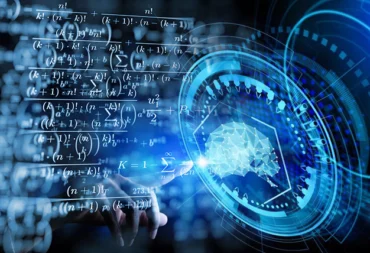VR and AR face tracking use cases and trends
AR and VR technologies have existed for decades, but only recently have they started gaining traction among consumers and businesses. Even those who may be completely out of touch with the latest trends must have heard about Pokémon Go and Snapchat.
Although AR and VR experiences may seem simple and intuitive for end users, they require plenty of well-orchestrated technologies in the background. One of such technologies is face tracking which serves as a foundation for many important functions. From determining head position and gaze direction to detecting facial expressions and creating 3D models – face tracking is a must.
VR and AR face tracking use cases
Ready-made SDKs make the implementation of face tracking into VR and AR solution easy. However, it’s important to know the requirements of a specific use case. This helps in choosing the provider whose technology will be able to deliver the optimal results.
In most cases, the performance speed depends on the implementation and optimizations. The face tracking algorithm developed by Visage Technologies can track 99 facial landmarks with the frame rate of 30 fps on smartphones to over 100 fps on desktop computers. However, for some specific use cases we can reduce the number of tracked points to increase speed.
AR and VR technologies are mostly mentioned in the context of games and entertainment. However, they can be used for so much more, including virtual tours, point-of-view training, try-on applications… There are countless possibilities of this technology for business and consumer uses.
Beauty and cosmetics
A possibility to virtually try makeup, glasses, or jewellery is a must-have for brands in cosmetics, eyewear, and lifestyle industries. In just a few clicks, customers can check out how the chosen product looks on them. Quality face tracking allows them to get the complete picture in real-time, even if they move their head around.
For customers, it’s a great way to easily find the product that suits them best, which is especially important in online shopping. Consequently, they are more likely to be satisfied with their purchase and remain loyal to their brand.
For brands, it’s a chance to increase sales and gather valuable data for better analytics. They can add a virtual try on to their website, allowing users to try on products as they browse through the page. They can also build a mobile application with loyalty programs, social sharing options, shopping lists and more. Finally, the technology can help grow sales in physical stores, too, using smart mirrors or tablets.
Virtual makeup applications from brands such as L’Oreal and Oriflame are already available to customers worldwide. This allows them to increase their market reach and brand visibility on digital channels.
Another great example of using face tracking in a product is Arrisum. This device allows dental patients to “design” their future smile by letting them try out various teeth models and colors. This helps both patients and dentists understand and visualize the expected outcome of dental interventions.
Marketing
AR is also widely used in marketing. It helps create interactive campaigns that attract attention and encourage engagement.
An example of a successful global campaign is „Say Yes to the World” by Lufthansa. A part of the campaign was an AR installation called „Open Seats”. Seated on economy premium seats in front of a 7 square meter screen and captured by sensors and cameras, participants were invited to interact with a mix of animated 3D elements, actors and real-world environment in order to playfully discover interesting destinations.
Face filters are also frequently used to promote products and build loyalty. People can put on the colors of their sports team, take a selfie with a popular cartoon character or transform themselves into someone (or something) else.
Gaming and entertainment
Face tracking doesn’t always have to be the core of a product – it can also be an addition that can make the product more suitable or attractive for the target market. A great example of such use case is Canon and their new portable photo maker Zoemini. Canon created an app with creative photo editing options – from borders and stickers to 3D face filters such as animal masks. After editing their photos, users were able to connect their smartphone to Zoemini portable printer via Bluetooth and immediately print their photos, creating fun and long-lasting memories.
Another example is FaceDanceChallenge, a game that uses face as a joystick. Users have to mimic the emoticons shown on the screen to gain points. The game quickly vent viral and has more than 10 mil downloads to date.
In the context of VR, face tracking technology is often used to achieve realistic virtual avatars whose facial expressions reflect those of the actual users.
Events and tours
VR and AR can also enhance visitor experience at tours and events.
A great example of such use case is Sakuya Lumina Night Walk in Osaka Castle, a tour that offers a stunning conception and production of immersive environment. Besides being amazed with surreal lighting and special effects, the visitors were also able to interact with lights and visualizations. Sakuya Lumina is a perfect example of blending high tech with historical heritage in order to create unforgettable experiences.
The current state of reality
As the intuitiveness and user experiences related to AR technologies improve, it gains various forms and spreads to different types of devices. So far, AR has found its way to our smartphones, smart mirrors and smart glasses (AR headsets).
Thanks to these advancements, it’s a great time to use the new technologies to engage your audiences and improve business results. Create a virtual try-on, run interactive marketing campaigns, educate employees, bring innovation to your events… It’s your chance to create experiences that are impossible to ignore.
Contact us to get your FaceTrack evaluation licence and build smart solutions using proven face tracking technology.

